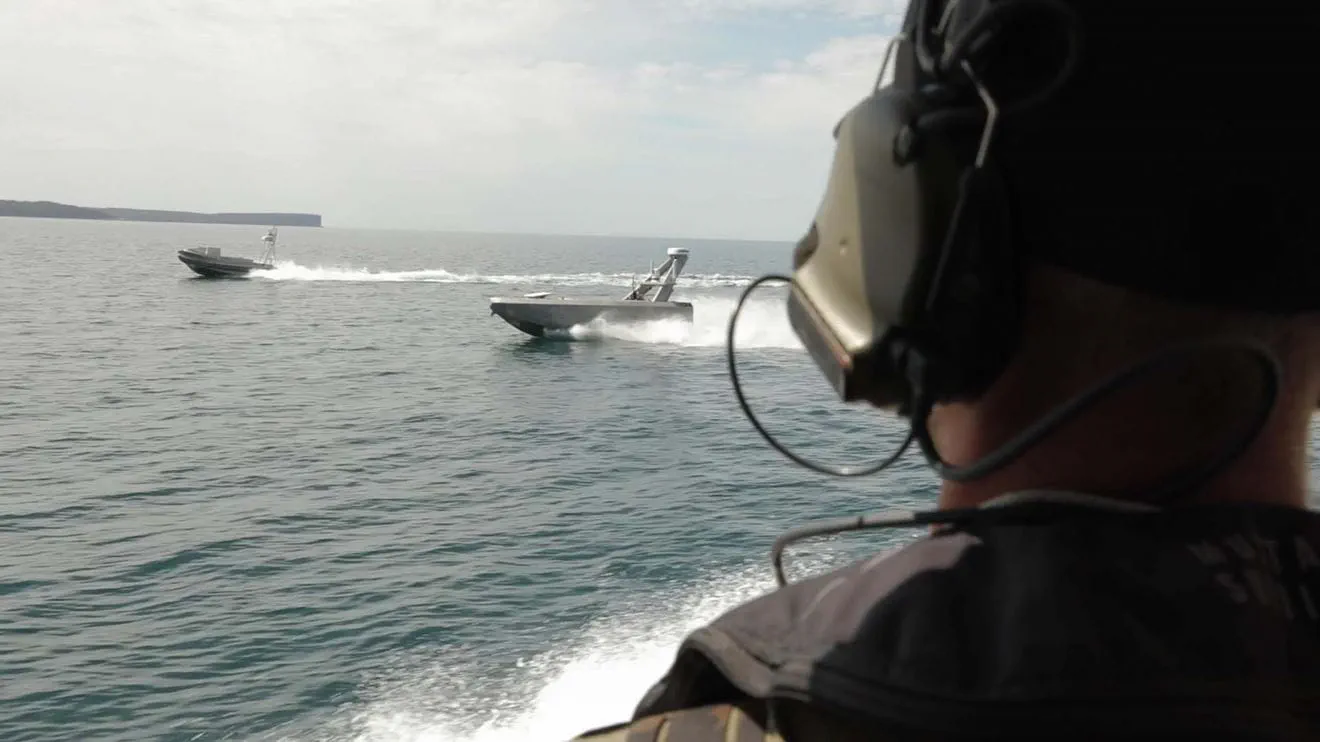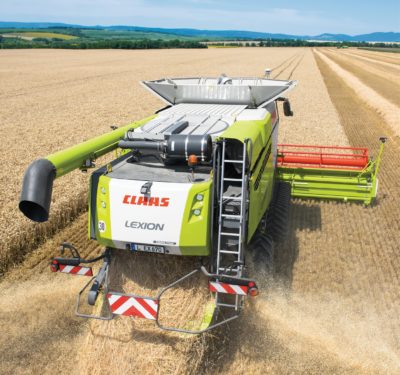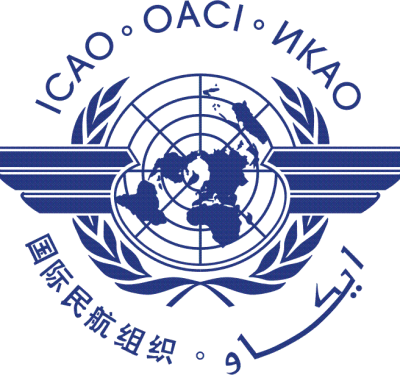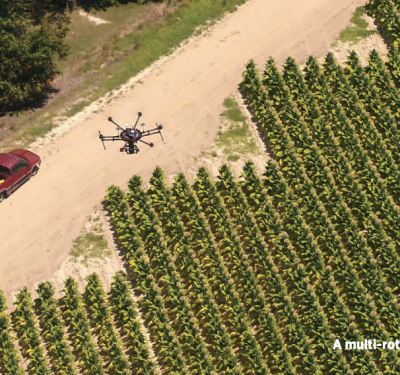AUKUS is a strategic trilateral security pact formed in September 2021 between Australia, the United Kingdom, and the United States. Its primary aim is to enhance defense and security cooperation among the three nations, particularly in response to the growing geopolitical challenges in the Indo-Pacific region. The pact underscores the importance of military innovation, technology sharing and strengthened collaboration to maintain regional stability and deter potential threats.

In Spring 2024, AUKUS experts deployed autonomous and artificial intelligence (AI)-enabled sensing systems during the Resilient and Autonomous Artificial Intelligence Technology (RAAIT) trials, in the United States, as part of the AUKUS advanced capabilities line of effort, known as Pillar 2.
Military personnel from the three nations tested autonomous and AI-enabled sensing capabilities in a multi-domain battlespace, minimizing the time between sensing enemy targets, deciding how to respond and responding to the threat.
“It used to be that each nation used its own datasets to develop separate models and deploy those models on their own platforms. Under RAAIT, we’ve matured the AI pipeline, focusing on interchangeability and interoperability, which allows for any combinations of datasets, models, algorithms and platforms to be used across all three nations,” said Dr. Kimberly Sablon, the Principal Director of Trusted Artificial Intelligence and Autonomy in the Office of the Under Secretary of Defense for Research and Engineering.
In Fall 2024, the Maritime Big Play series exercises were held in Australia, deploying and testing 30 autonomous platforms to increase interoperability across the three nations and prove their ability to control assets belonging to each other’s navies.
IUS interviewed key AUKUS Pillar 2 partner Red Cat Holdings about their role in the trilateral intelligence and technology sharing initiatives.
Q: Can you share how Red Cat and the Teal 2 drone fit into the strategic objectives of AUKUS, especially given the emphasis on unmanned systems in Pillar 2?
Red Cat Holdings: Absolutely. Here’s how Red Cat and Teal drones are relevant in many of the different AUKUS Pillar 2 workstreams:
- Cyber capabilities: all of our products are Blue UAS cyber-clean.
- Artificial Intelligence and autonomy: the new Teal 3 has a Qualcomm RB5 AI engine onboard, and its new ground control station has a Qualcomm Snapdragon 8 Gen 2 AI engine onboard, facilitating a targeted suite of AI-enabled capabilities – with room for more.
- Electronic warfare capabilities: the new Teal 3 has a variety of new capabilities enhancing uninterrupted operation in A2/AD environments.
- Innovation and information sharing: Red Cat’s horizontally-integrated business model and Red Cat Futures Initiative focus on the rapid integration of innovative technologies for both current and future UAS. And we’re committed to easy information-sharing by having the Teal 3 integrated with both Nett Warrior and ATAK systems.
Q: With Teal 2’s success in receiving Blue UAS certification and its deployment in military settings, how do you foresee AUKUS facilitating technology adoption across member nations?
Red Cat Holdings: Deep-tech sharing between the Five Eyes (FVEY) nations has always been very good, but landmark export control reforms (blanket exemptions) being implemented for all three AUKUS nations now drop the technology-sharing barriers almost to the floor. (Refer to https://www.gov.uk/government/news/historic-breakthrough-in-defence-trade-between-aukus-partners for details.) U.S. DoD’s Blue UAS initiative targets getting rapidly-evolving commercial UAS technologies into the warfighter’s force structure quickly, but when compared to AUKUS’ export reforms, Blue UAS seems completely dwarfed in size and scope. Still, they are wholly aligned with each other in their intention to speed the fielding & sharing of critical defense technologies. And Red Cat is pursuing the benefits of both.
Q: How can Teal 2’s thermal imaging and AI capabilities enhance the operational effectiveness of AUKUS forces?
Red Cat Holdings: Red Cat has been working with our technology partners to marry ATR & target-tracking onto our small VTOL platforms, with the latest mechanically-stabilized mini EO/IR sensor packages (Teledyne FLIR Hadron 640+), in operationally compelling ways. At the same time, we’ve been working together with other partners to incorporate rapid 3D mapping, vision-based navigation, encrypted frequency-agile radio comms, M-Code GPS, and swarming capabilities. With the imminent release of the Teal 3, which is our contender for Tranche 2 of the U.S. Army’s SRR Program, using all of these software tools has required us to significantly boost the digital processing power onboard both the ground control station and the air vehicle. The Teal 3 bird’s Qualcomm RB5 enables AI at the edge, and the ground control station’s Qualcomm Snapdragon 8 Gen 2 enables terrestrial AI if needed for whatever reason. This ground control station is all-new (it hasn’t been unveiled yet as of this writing), not only with massively more processing power but also incorporating many new capabilities that the Army SRR customer had asked for: broad modularity (including the ability to operate using other common ground control station software), Nett Warrior connectivity, and ATAK connectivity (including ATAK’s UAS Tool plug-in). The Teal 3 will be continuing Teal 2’s compatibility with the Tomahawk Kinesis ecosystem, to preserve the expanded capability and global customer access that doing this provides. And the U.S. Army has been developing special-mission capabilities for the Teal 3 that broaden its mission set even further beyond ISR & targeting, which we hope that they will disclose someday.
What all this provides to AUKUS forces is Platoon-level UAS ISR+ capability that gives them the latest in hardware & AI-enabled military capabilities with maximized interoperability, at pricing a fraction of what comparable traditional bespoke military systems would cost.
Q: The modular nature of Teal 2 allows for quick repairs and upgrades. How important is this feature in collaborative operations under AUKUS, where rapid deployment and adaptability are critical?
Red Cat Holdings: A key part of the Blue UAS initiative is to get the latest in commercial UAS technologies into the warfighter’s hands quickly. The U.S. Army’s SRR Program is the first official DoD program to buy using the Blue UAS pipeline. But we believe it to be equally important that this process of fast-paced technology injection should be sustained, so that fielded products also get regularly refreshed – whether this is implemented inside the DoD program, or outside of it, or even as a mixture of both. Building upon Teal 2 principles, Teal 3 employs both hardware and software modularity, for ease of field repair by the user but also for ease of upgrading system capabilities after initial delivery. Sometimes this method is referred to as “future-proofing”.
Q: Considering AUKUS focuses on cooperation between the US, UK, and Australia, what challenges and opportunities do you see in integrating Red Cat’s unmanned systems?
Red Cat Holdings: There are still Blue UAS adoption nuances that U.S. DoD hasn’t had to figure out fully yet, so there’s some necessary lessons-learned that we all need to get behind us before we can speak confidently on the pros and cons of just the Blue UAS initiative. But we do know that UK MOD/DE&S and ADF/CASG will need to figure out how to streamline their acquisition requirements similarly to how U.S. DoD is doing it (initially via ‘Other Transaction Authority’ buys – see https://www.defenseacq.com/ota-contract-vs-far-based-contract/), so that they don’t just drive the price and schedule of affordable Blue UAS systems right back up to traditional bespoke system levels as they acquire them. For most governments, this is probably the hardest part of the puzzle to solve. The benefits of buying systems such as ours are self-evident as described earlier, but exactly how to do that isn’t clear without some empowered creativity being injected into the process. Amazingly, now is actually the perfect time to do this, as AUKUS governments are already working to change other larger institutional roadblocks on the exporting of technologies between us. Don’t say this kind of thing can’t be done, we’re literally watching it get done even bigger elsewhere in government!
Q: How does Red Cat ensure that the Teal 2 remains compliant with cybersecurity and operational standards across AUKUS nations, especially given the heightened focus on secure, AI-enabled drones?
Red Cat Holdings: It’s hard to imagine that harmonization efforts haven’t already begun in some way between the US and other nations, to end up with perhaps an EU version of Blue UAS (or an AUKUS version) like has been done for harmonized manned aircraft certification.
With regard to cyber security, it was intentionally included into Blue UAS requirements, because there are at least a few legacy UAS still in U.S. DoD inventory that were initially fielded waiving this requirement (assuming only isolated use separate from the battlespace network). What was true twenty years ago for Small UAS is no longer true today; now secure connectivity is everything. Teal 3 will be fully Blue UAS certified and NDAA compliant, just like Teal 2 is today. This space is where we live and work.
Red Cat’s intent is to comply with whatever reasonable set of common standards exist for this category, to facilitate ease of adoption globally. The more any country strays from such standards with their own special ‘adds’, the more they end up paying for (and waiting for) a bespoke system.
Q: As unmanned systems like the Teal 2 increasingly take on ISR (intelligence, surveillance, reconnaissance) roles, how do you envision the balance between manned and unmanned systems evolving within AUKUS operations over the next decade?
Red Cat Holdings: Within U.S. DoD, our class of sUAS (both ISR & lethal) has been tailored toward the needs of Army platoons, though it will work equally well for platoons of Marines or Special Forces. Moore’s Law has continued to push acceptable day/night ISR imaging capability (identical NIIRS rating) further and further down the UAS size scale, freeing up larger systems to instead satisfy more special-mission needs (such as EW, SEAD, and SAR imaging). What the RQ-7 Shadow could do 20 years ago, the RQ-20 Puma AE could then do 10 years ago, and now the Teal 3 can do today. But, the Teal 3 can do it with a much higher degree of autonomy and interoperability, by a single soldier, and with one-to-many multi-aircraft capabilities not possible before.
On the larger question regarding the evolving balance of manned and unmanned systems, one major desire for new unmanned systems is for them to be an order of magnitude cheaper so that they can be fielded in large quantities, rapidly. This need has been confirmed in countering Russian aggression in Ukraine (Ukraine is now self-producing 100,000+ lethal FPV drones per month), and is expected to continue for countering Chinese aggression within the Asia-Pacific region. The Blue UAS initiative is fully aligned with this low-cost desire given the pull from commercial sources, but the need spans ALL domains: land, maritime (surface & undersea), and air. As industry responds, the manned/unmanned balance should swing heavily toward unmanned.
Q: How does collaboration with complementary industry partners (software, hardware, etc.) position Red Cat within AUKUS, particularly in enhancing unmanned capabilities for emerging military threats?
Red Cat Holdings: Red Cat isn’t a vertically integrated company at all; our specialty is horizontal. Our methodology is to get best-of-breed commercial technologies integrated into our systems smartly, and then to field them rapidly. Our partner base is broad, including almost all major subsystems: day & night optical sensors, radios & datalinks, automated target detection / classification / identification and tracking, photogrammetry (2D imagery and 3D models), vision-based navigation, swarming & collaborative behaviors, ground station control hardware & software, and more. Of particular interest lately are technologies that enable continued operational effectiveness in A2/AD environments.
We’re in the process of institutionalizing these collaborations via the Red Cat Futures Initiative (RFI), which will help to standardize partner onboarding and secure government funding for the required integration effort. We already have some RFI partners from non-US AUKUS nations, and we expect to gain even more as AUKUS-focused activities ramp up on Pillar 2.






